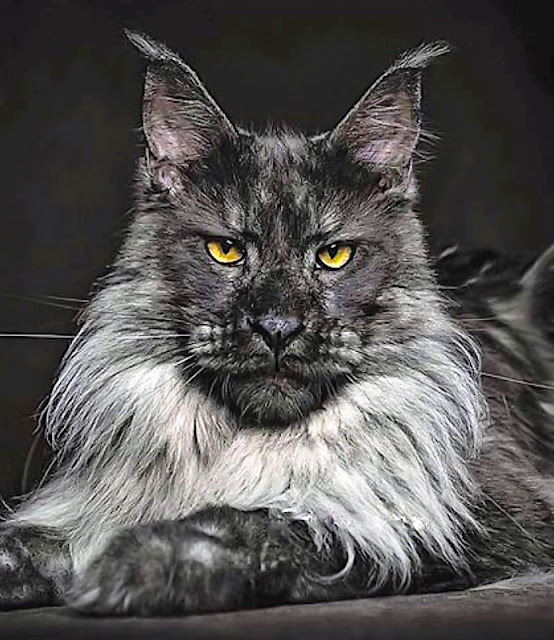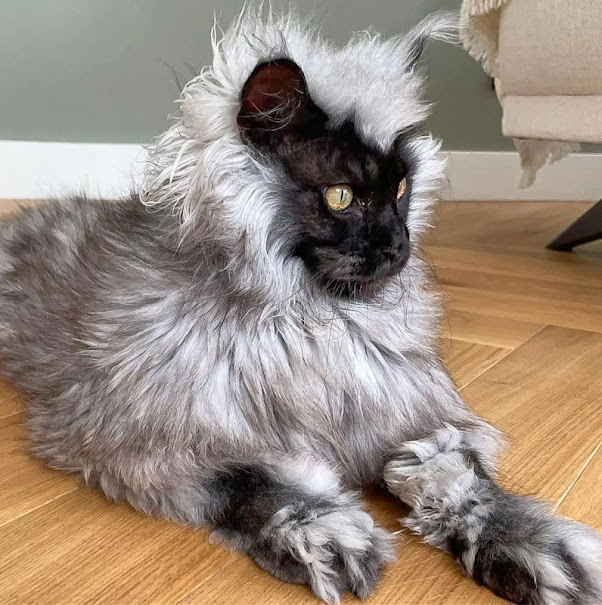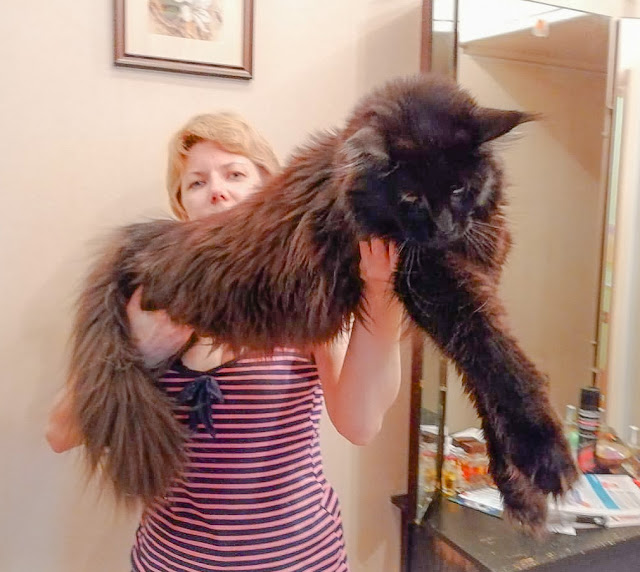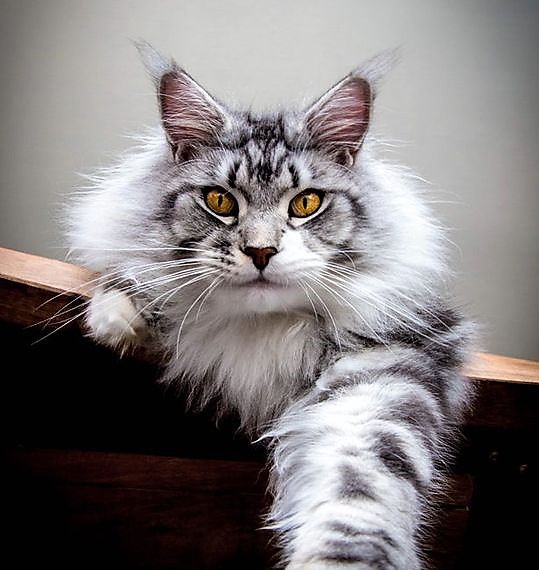Maine Coon Hip Dysplasia
As is the case for dogs, cat breeds that are most often afflicted by hip dysplasia tend to be the larger, big boned breeds and in particular male cats as they are larger. The Maine Coon is the largest cat registered at the Cat Fanciers' Association on my reckoning. Some Maine Coons hit the 25 lb mark. Another breed that suffers from this condition is the Persian.
Apparently of the total number of X-rays sent to OFA (the Orthopedic Foundation for Animals) from Maine Coon breeders, 23% show hip dysplasia. Although most have mild symptoms. These cats should be "culled" (removed) from breeding lines.
Hip Dysplasia - Description
The head of the femur (the thigh bone) fits loosely into a poorly developed socket in the hip (acetabulum of the pelvis, more accurately). The joint becomes unstable. The bones degenerate as a result and this causes pain coupled with abnormal movement. The condition is inherited - it is a polygenetic trait (multi-gene based). If the condition affects a small cat there may be no symptoms due to less weight being carried by the joint.
Cats suffering from hip dysplasia have a stiff gait and are reluctant to jump and climb.
Hip Dysplasia - Screening
Cats can be screened for hip dysplasia. The initial examination by the vet is through feel (palpation).
Maine Coon Hip Dysplasia - Treatment
Exercise helps build up the muscles of the loose joint stabilizing it. Keeping weight down also helps.
Joint supplements given under vet guidance can be helpful. These include Sea Flex, Cosequin etc. (USA).
Sometimes pain meds and anti-inflammatories are needed. Surgery can be carried out to deal with pain (the head of the femur is removed).
Apparently of the total number of X-rays sent to OFA (the Orthopedic Foundation for Animals) from Maine Coon breeders, 23% show hip dysplasia. Although most have mild symptoms. These cats should be "culled" (removed) from breeding lines.
Hip Dysplasia - Description
The head of the femur (the thigh bone) fits loosely into a poorly developed socket in the hip (acetabulum of the pelvis, more accurately). The joint becomes unstable. The bones degenerate as a result and this causes pain coupled with abnormal movement. The condition is inherited - it is a polygenetic trait (multi-gene based). If the condition affects a small cat there may be no symptoms due to less weight being carried by the joint.
Cats suffering from hip dysplasia have a stiff gait and are reluctant to jump and climb.
Hip Dysplasia - Screening
Cats can be screened for hip dysplasia. The initial examination by the vet is through feel (palpation).
Maine Coon Hip Dysplasia - Treatment
Exercise helps build up the muscles of the loose joint stabilizing it. Keeping weight down also helps.
Joint supplements given under vet guidance can be helpful. These include Sea Flex, Cosequin etc. (USA).
Sometimes pain meds and anti-inflammatories are needed. Surgery can be carried out to deal with pain (the head of the femur is removed).










Comments
Post a Comment
Please share your Maine Coon experiences.